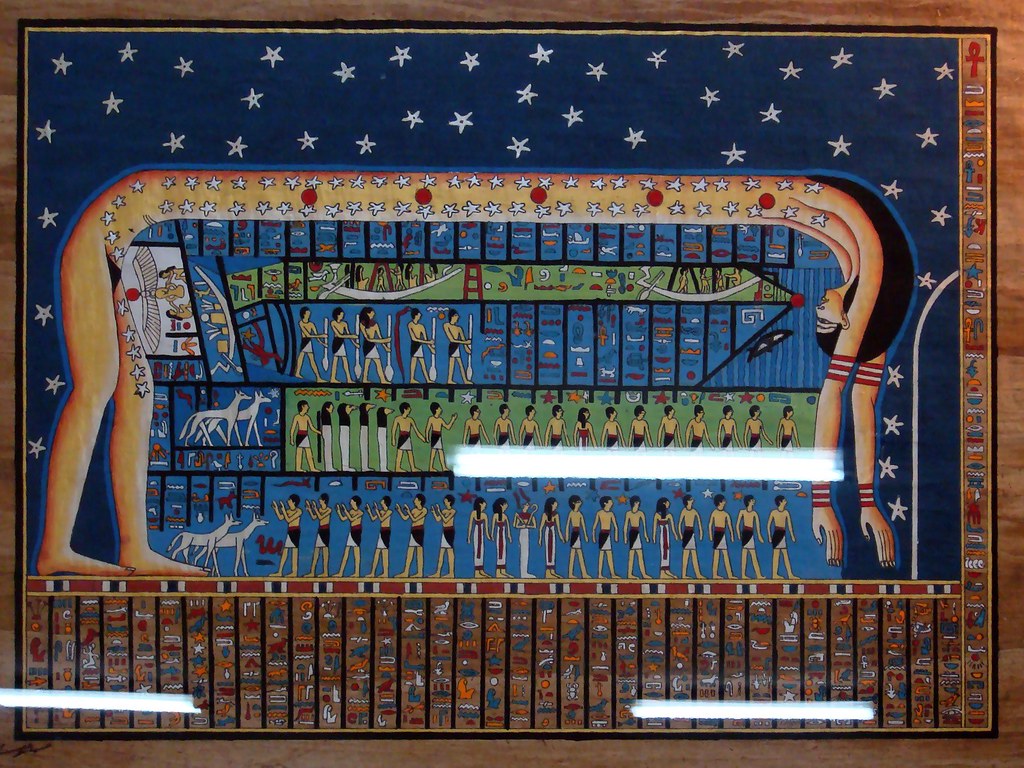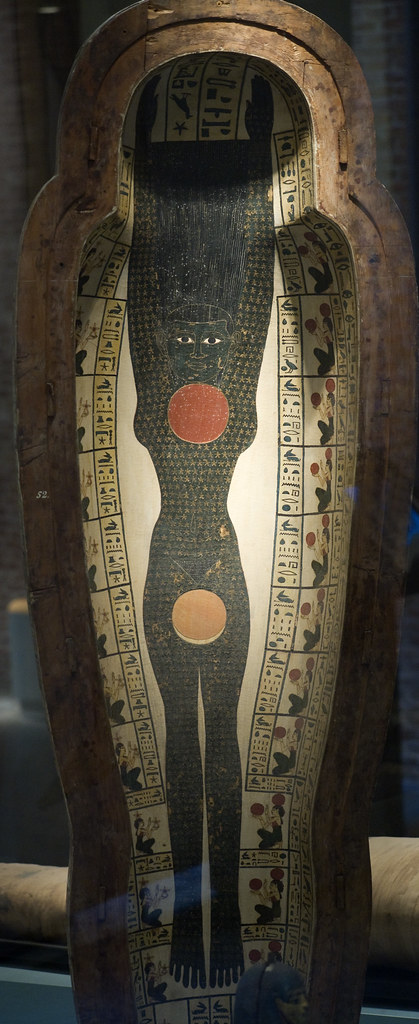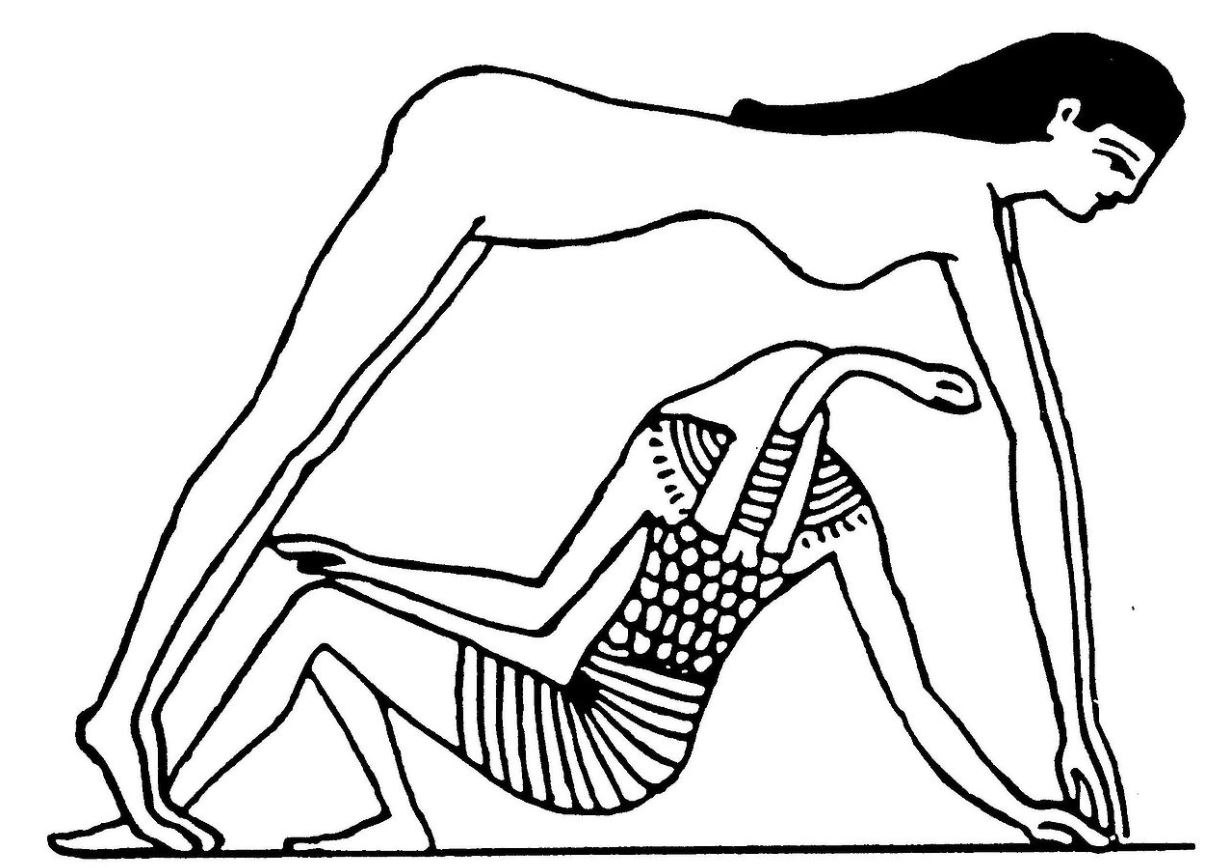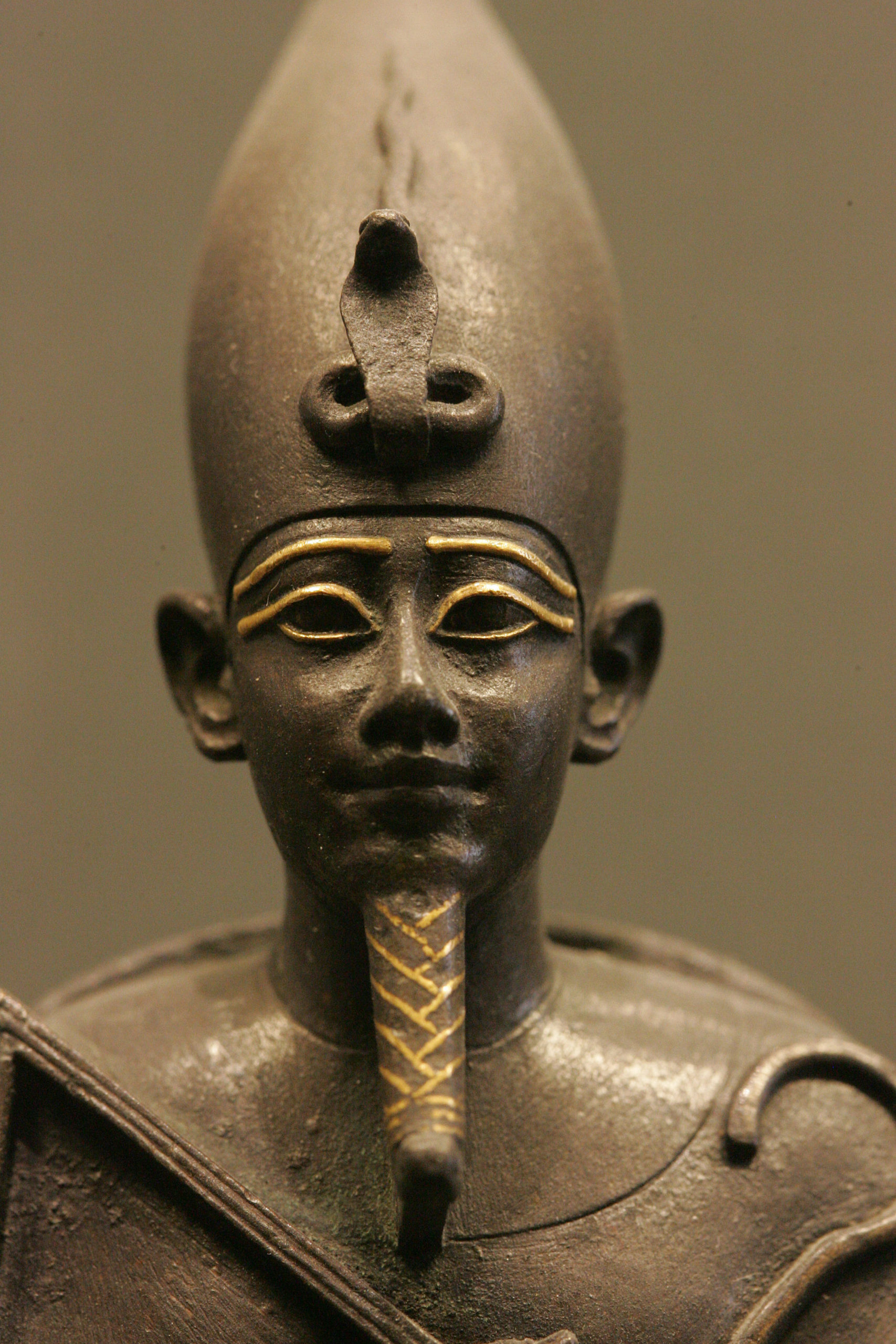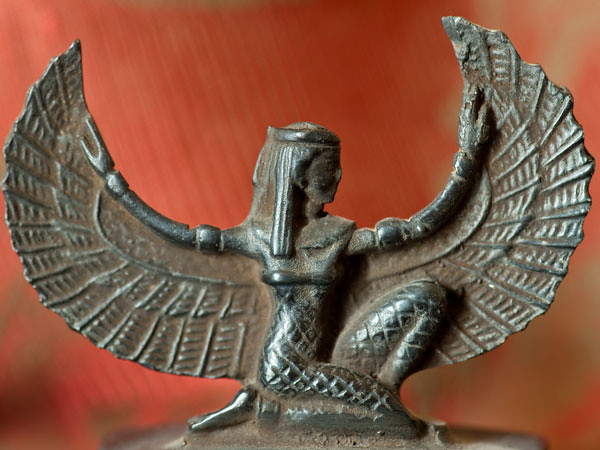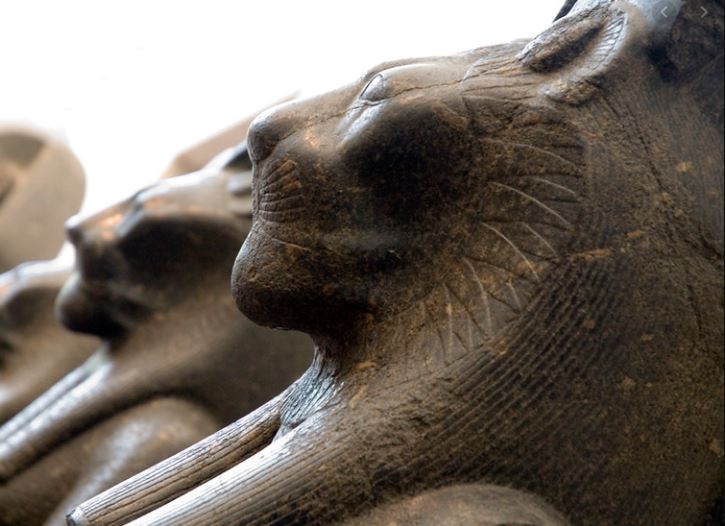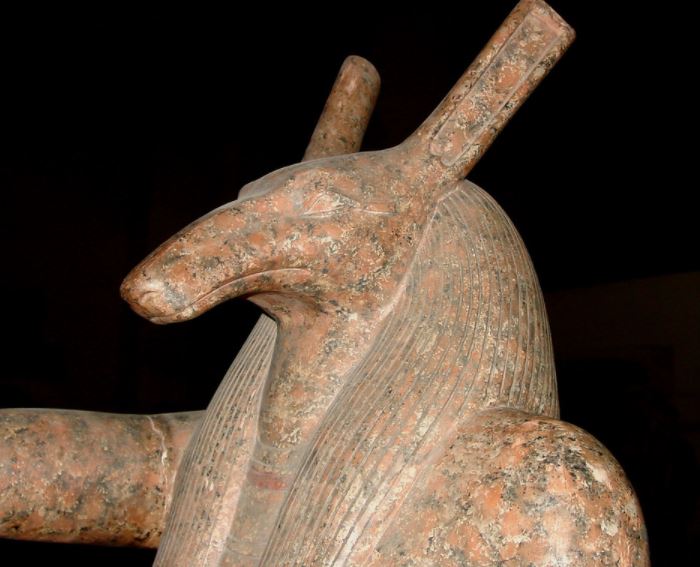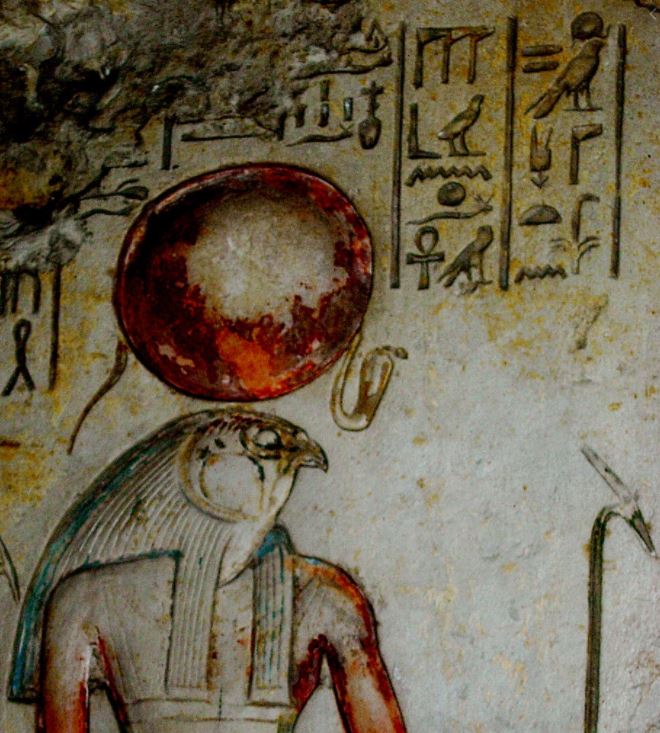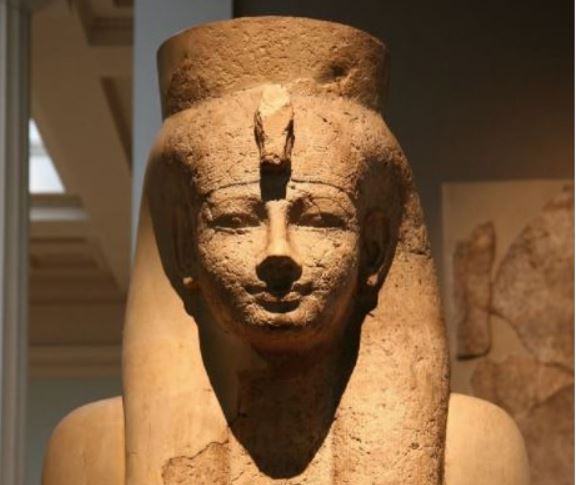The Egyptian Goddess Nut, Goddess of the Sky and Motherhood
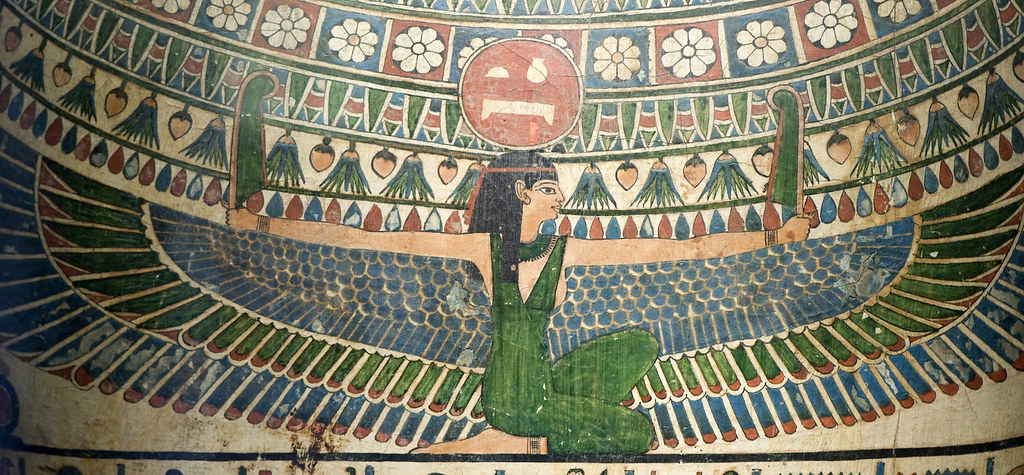
Just like in many other ancient religions, the sky and the stars are symbols of deities and gods. For the Egyptians, this was also true, and they believed in a very particular goddess under the name of Nut.
Nut, the sky goddess for the Egyptians, was the daughter of Shu and Tefnut, who were respectively the god of air and the goddess of moisture, and who had been generated by the primordial deity Atum, that it was later known as Ra or Amon-Ra.
The Egyptian goddess Nut was one of the most ancient among Egyptian gods and goddesses. She was the sister and wife of Geb, the god of the earth, and was the mother of some of the most important deities in the pantheon of ancient Egypt such as Osiris, Isis, Haroeris, Nephthys, and Set.
The Egyptian goddess Nut was often called “the mother goddess”, and motherhood surely is one of her principal attributes, just like we have seen.
Identified with the sky itself, Nut, the sky goddess, was often represented as an arch stretched over the earth.
Other common representations portrayed her as a woman sitting with a pot of water on her head, as a cow, or as a winged figure.
Pictures of Nut the Egyptian goddess, represented as a winged figure
Nut, the sky goddess: Origin of the Name
The name of the Egyptian goddess Nut was written in hieroglyphs as “Nwt”, a word that actually meant “sky”.
This circumstance makes evident her identification with the upper part of the universe.
Anyway, the hieroglyph for her name also indicated a pot of water, a fact which explains some aspects of her iconography and probably refers to her role as a mother goddess.
History of Nut and Most Important Myths Related to Her
Due to her early origin, Nut the goddess of the sky plays an important role in the myths which explain how the world took its present form.
At the same time, her identification with such an important element as the sky connects her to many important natural phenomena, whose explanation was also given in the form of myths.
These two aspects are illustrated in the following stories, which are among the most important myths related to the ancient Egyptian goddess Nut.
Relationship between the Egyptian goddess Nut and Geb
As we said, the sky goddess had a brother, Geb, who became her husband. It was told that at the beginning of time their love was so passionate that they lived in a perpetual embrace.
Their father Shu, made jealous of the situation, separated them with his body. From that moment on, the Egyptian goddess Nut would have touched the earth only with her feet and fingers, according to her usual representation as an arch stretched over the earth.
Understanding the separation of Nut and Geb
The separation of the sky (Nut) from the earth (Geb) using air (Shu) had a deep etiological meaning for ancient Egyptians: it explained the actual order of the world, with the sky above, the earth below, and the air between them.
This separation was also considered a crucial fact for the life on earth to come into existence. While still embraced to Geb, Nut the sky goddess had become pregnant with many sons, to whom she consequently gave birth: they were the stars and the planets of the sky.
Goddess Nut ancient Egypt representation
The Cycle of the Sun in the Sky
Since Nut was identified with the sky, it was believed that the movement of all celestial bodies took place on her body.
For this reason, she was often portrayed covered with points representing stars and planets. In particular, she played an important role in the cycle of the sun.
The sun, identified with the god Ra, was thought to be swallowed by Nut, the sky goddess, at the end of every day. During the night he walked, not visible, inside her body. Every morning, Nut would have given birth to Ra again, so that the cycle could repeat.
Powers of the Egyptian goddess Nut
As the goddess of the sky, Nut clearly had the power to grant the natural procession of celestial bodies.
Thanks to her association with motherhood, she was also considered to be the protectress of all the livings, and as such appears in numerous prayers and spells.
Anyway, due to the importance of the afterlife among the population, the ancient Egyptian goddess Nut, as many other important deities, was deemed capable of protecting the dead as well.
The goddess Nut was often represented on sarcophagi and the probe of it is that almost all the coffins preserved in the Cairo Museum bear her portrait.
When represented on this kind of object, she is usually found in her winged version, or, alternatively, she appeared in the form of a ladder, which was, in fact, one of her symbols as we will discuss later.
The ancient Egyptian goddess Nut represented in a sarcophagi as a ladder
Symbols of Nut and Their Meanings
In the past sections, we have mentioned three symbols of Nut: the pot of water, the cow, and the ladder. Let’s see in greater detail their meanings.
Nut goddess symbol: The Pot of Water
It is thought that the pot of water was a symbol for women’s wombs. It would therefore represent fertility and motherhood, which in fact are among the most important attributes of Nut, the sky goddess.
Nut goddess symbol: The Cow
One of Nut’s symbols was the cow, an animal that was often associated by Egyptians with motherhood.
Like the pot of water, then, also the cow was probably a reference to the Egyptian goddess Nut as the mother of the main deities of their pantheon.
In this regard, we note that one of her common epithets was “the one who gives birth to gods”.
Nut goddess symbol: The Ladder
Mainly found concerning the world of the dead, the ladder was the instrument offered by Nut to her son Osiris to access her heavenly reign.
Nut Egyptian goddess additional facts
The fact that ancient Egyptians identified the sky with a goddess and the earth with a god is very peculiar: most often, in ancient mythologies, we find that the contrary occurs.
The reason for this anomaly has been explained by some scholars in a very fascinating way, by reference to the peculiar climate of Egypt.
In most parts of the world, the earth is made fertile and able to produce vegetation by rain. Such a fact led the ancients to think of the sky as a fertilizing, male entity, and of the earth as a recipient of this fertilizing power, a female womb.
In Egypt, this is not the case, because Egypt’s weather is quite dry. The fertilizing power, for Egyptians, came from the Nile, which was obviously considered an earthly element. Earth was therefore seen as a male being and, to maintain the opposition, the sky was conceived as female.

